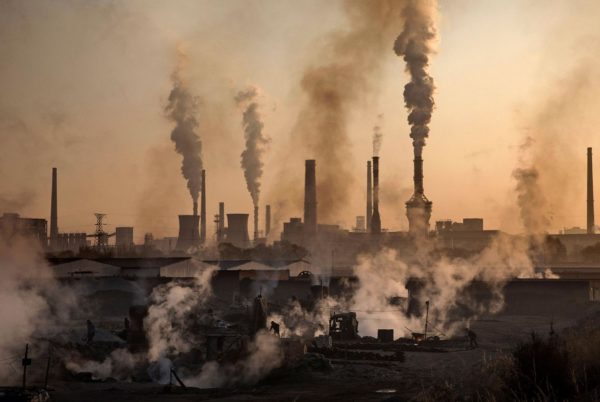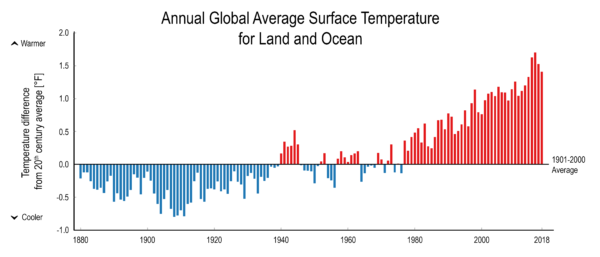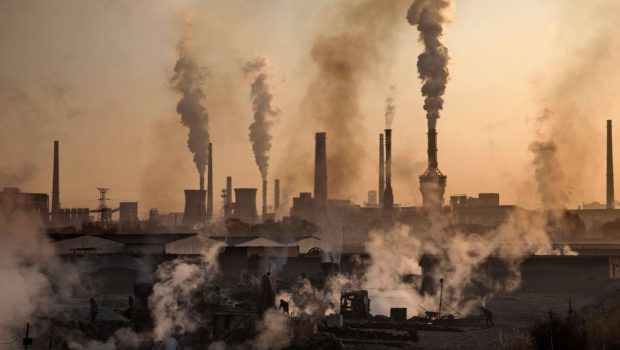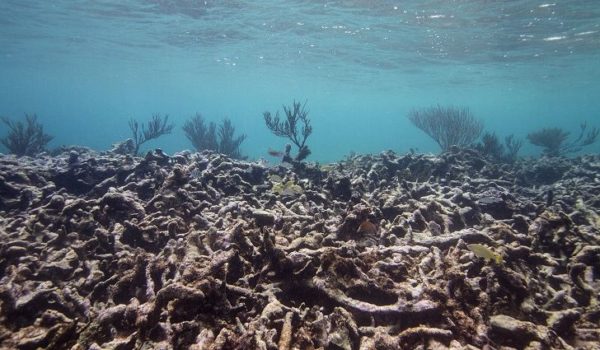Climate Change: Its Effect on Human Health
Climate change refers to the alteration of the earth’s climate over a period of time, due to changes in the atmosphere as well as in the conditions (geologic, chemical, biological or geographic) that affect weather- over a period of time. Climate change can be attributed to various causes that can either be due to natural factors or human activities. Of these, human activities causing pollution of the environment have shown to contribute significantly to climate change and its ill-effects.

Pollution in the Industrial Revolution
Image source: ArcGIS StoryMaps
Ever since the beginning of the Industrial Revolution in 1760, there has been a tremendous growth in the number of factories that produce energy by the combustion of fossil fuels. This, combined with deforestation and modern agricultural practices like burning of wood, has led to increased trapping of ‘greenhouse gases’ in the atmosphere. These gases, namely water vapour, carbon dioxide, methane and chloroflurocarbons (CFCs) have been called so because they are notoriously known to cause the ‘Greenhouse effect’: these gases trap sunlight over time and ultimately lead to an increase in the temperature of the earth- giving rise to ‘Global Warming’. Furthermore, CFCs have been discovered to cause depletion of the protective ozone layer of the atmosphere and lead to exposure of people to harmful UV radiation.
According to NASA, the rate of increase of the earth’s temperature has almost doubled. Also, the global average surface temperature rose 0.6 to 0.9 degree Celsius between 1906 and 2005. The ice sheets in Greenland and Antarctica have decreased in mass. The global sea levels, on the other hand, rose about 8 inches in the last century. In addition, the disturbing phenomena of glacial retreat, decreasing snow covers, extreme weather temperatures and ocean acidification (a decrease in the pH of ocean water due to increased uptake of carbon dioxide from the environment), thus, point towards the unmistakable fact that the threat of global warming is as real as it is ominous.

Annual Global Average Surface Temperature for Land and Ocean
Image source: GlobalChange.gov
As a result of the rising temperatures, glaciers have melted resulting in flooding of coastal areas. Intense weather conditions have been seen to occur, with severe floods, storms and longer droughts. Climate change has been said to play some role in aggravating the bushfires of Australia and the Amazon rainforest fires. The Amazon rainforest is the world’s largest terrestrial ‘carbon dioxide sink’, and human activities such as excessive felling of trees and modern agricultural practices have played vital roles in the destruction of this goldmine of biological diversity.
Global warming has varied effects on the environment as well as the individual. As per the World Health Organisation (WHO), 24% of the global disease burden and 23% of all deaths can be attributed to environmental factors. The United Nations Organisation (UNO) formed the Intergovernmental Panel on Climate Change (IPCC) in 1988 to assess the world’s published literature on how human activities have led to changes in the climate, and how it affects human health. In 2001, IPCC concluded that climate change is particularly projected to affect low-income populations and tropical/sub-tropical regions.
Climate Change is mostly caused by environmental pollution, and pollutants in air and water can result in serious health conditions. WHO notes that almost all recent pandemics have origins in wildlife, and there is evidence that increasing human pressure on the natural environment may drive disease emergence.

Locust attack in India (year 2020)
Image source: Outlook India
Increased temperatures due to global warming can lead to excessive heat related illnesses. Declining air quality can cause exacerbation of cardiovascular and respiratory diseases. The incidence of floods due to climate change can lead to vector borne diseases like malaria and dengue. It can also lead to water-borne diseases, causing diarrhoea that might be fatal, especially for children under the age of 5 years. Food shortages can be caused by floods or drought, resulting in malnutrition in children. Unexpectedly large locust attacks causing massive destruction of food crops were seen in India this year; even this has been thought to have potential link with rising temperatures. Further, ocean acidification also has detrimental effects on the marine ecosystem- by debilitating the structural integrity of species like oysters, clams, etc it leads to a disruption in the marine food chains, thus affecting humans. Skin cancers are seen to occur more in areas that have ozone layer depletion in the atmosphere, as are diseases of the eye.
Climate change can affect mental health as well. Increased temperature has been seen to increase aggression in people. Droughts and floods have caused mental stress, depression and anxiety. The psychological impact of physical illnesses caused by climate change is also immense.
WHO says that “climate change is a gradually increasing stress that may be the defining public health threat of the 21st century.” Clean air and clean drinking water are the environmental determinants of health that have a tremendous impact on the overall public health. Walking instead of taking the vehicle whenever possible, preventing paper wastage, planting trees, using recyclable objects are some of the measures we could implement at a personal level to decrease the stress we put on the environment. In this context, technology can help us by limiting the use of paper to a minimum. Safeguarding the environment can help prevent future pandemics of infectious diseases. It is, therefore, an urgent necessity and the need of the hour that measures be taken at the population and individual level to tackle the problem of climate change.

















